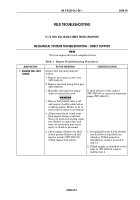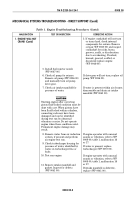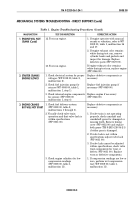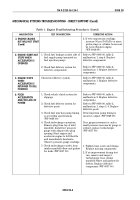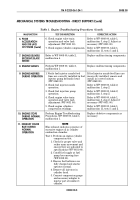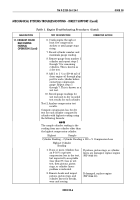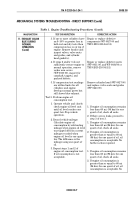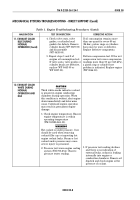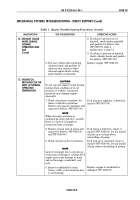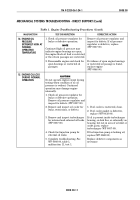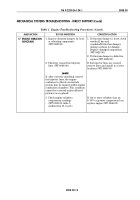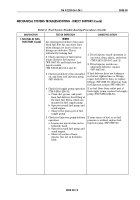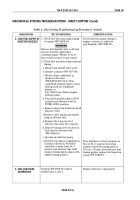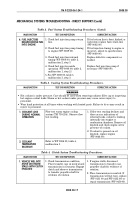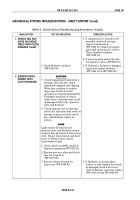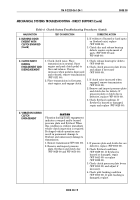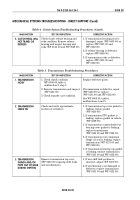TM-9-2320-361-24-1 - Page 139 of 1176
TM 9-2320-361-24-1
0008 00
0008 00-11
MECHANICAL SYSTEMS TROUBLESHOOTING - DIRECT SUPPORT (Contd)
MALFUNCTION
TEST OR INSPECTION
CORRECTIVE ACTION
14. ENGINE OIL
PRESSURE
EXTREMELY HIGH AT
NORMAL
OPERATING
TEMPERATURE
1. Check oil pressure regulator for
leaks or defective operation.
NOTE
Continued high oil pressure may
indicate engine bearings are spun,
the engine block oil feed is restricted,
or the return passages are restricted.
2. Disassemble engine and check for
spun bearings or restricted oil
passages.
Remove oil pressure regulator and
inspect for defects. If oil pressure
regulator is defective, replace
(WP 0037 00).
If evidence of spun engine bearings
or restricted oil passage is found,
replace engine
(WP 0046 00).
15. ENGINE OIL LOSS
DURING NORMAL
OPERATION
CAUTION
Do not operate engine except during
testing when condition of no oil
pressure is evident. Continued
operation may damage engine
internally.
1. Check oil pressure regulator for
leaks or defective operation.
Remove oil pressure regulator and
inspect for defects (WP 0037 00).
2. Remove and inspect oil cooler for
leaks, restrictions, or defects.
3. Remove and inspect turbocharger
for internal and external oil leaks.
(WP 0057 00).
4. Check fuel injection pump for
external oil leaks.
5. Complete troubleshooting. See
WP 0008 00, table 1,
malfunction 11, test 1.
1. If oil cooler is restricted, clean.
2. If oil cooler gasket is defective,
replace (WP 0038 00).
If oil is present inside turbocharger
housing, on hub fins, or externally on
housing, but not in area of oil inlet or
outlet parts, replace
turbocharger (WP 0057 00).
If fuel injection pump is leaking oil,
replace (WP 0069 00).
Replace defective components as
necessary.
Table 1. Engine Troubleshooting Procedures (Contd).
Back to Top

